#NatureZen: Hop to It!
words and photos by Melissa McMasters
Today we’re looking at some tiny jumping insects: the leafhoppers. Despite the name, they’re not closely related to grasshoppers–the main distinctions are size (leafhoppers are only a few centimeters long) and the way their mouths work. Grasshoppers bite and chew, tearing holes in the plants they eat; leafhoppers pierce and suck the sap from plants. Think of them as mosquitoes that bite leaves instead of people!
The comparison to mosquitoes holds true in another way: in large numbers, leafhoppers can be considered pests, partially because they can spread diseases from one plant to another. It’s unlikely that you’ll have so many in your garden that you’ll experience serious problems, but keeping the beds weeded (and sometimes giving hardy plants a good solid spray with the water hose to shake hoppers off) are some easy techniques to keep them from getting too established.
In a balanced ecosystem, leafhoppers are well-controlled by spiders, lacewings, and lady beetles, which means you can appreciate them for their bright colors and intricate patterns. Now is a great time of year to look closely at plants to see which hoppers are clinging to the surface.
One of the most common summer insects you’ll see in Overton Park is the versute sharpshooter. The name “sharpshooter” refers to the way these bugs spray tiny droplets from their bodies. Because they feed on sap, which is nutrient-poor, they have to filter a lot of liquid through their systems in order to extract what they need. The water and carbohydrates are then expelled as a sticky spray, which is helped in its flight by tiny hairs on the insect’s rear (look closely and you can see them in this photo). It’s somewhat alarming the first time you see it, but you’re not being attacked–at least not in a way that will hurt you! (Maybe try not to stand so close that it gets in your eyes, though…)
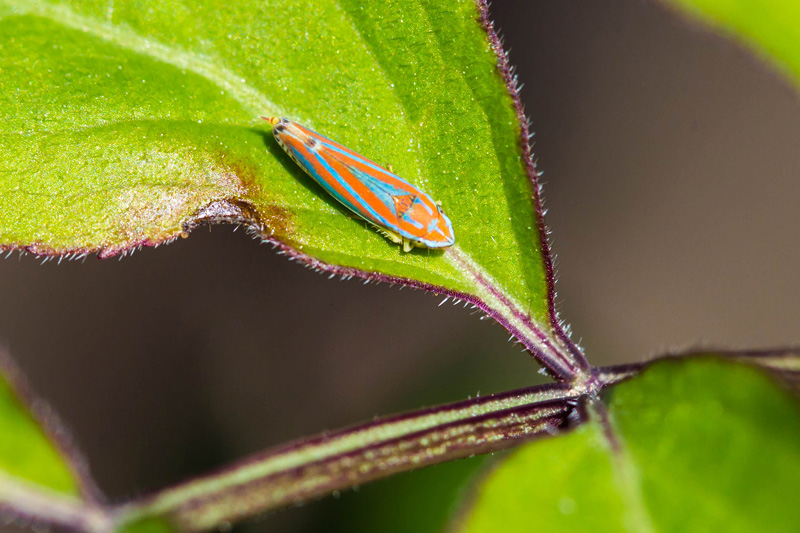
A close relative of the previous insect is the red-banded leafhopper, also known as the candy-striped leafhopper. This one is also quite common in the park.
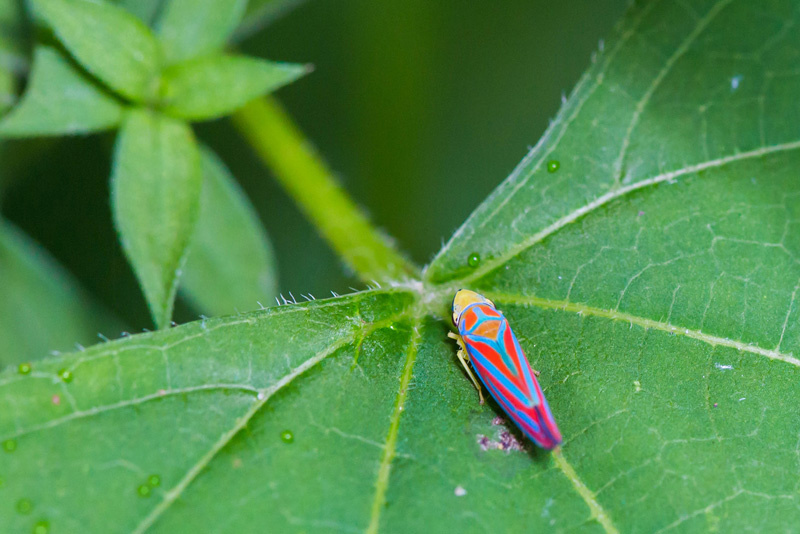
The broad-headed sharpshooter is a bit larger than the previous two, so it’s easier to study–if you can get it to stay still! This insect is a very quick jumper. But my favorite thing about it is the way it skitters sideways like a crab, an ability shared by other leafhoppers. Sometimes, if a sharpshooter is perched on one side of a leaf and you approach it with a finger, it will skitter to the backside of the leaf without ever appearing to lift its feet. If you continue to move your finger to where the bug is, it will sometimes go back and forth in what looks like a dance. (I recommend you try this only after making sure it’s not sitting on poison ivy!)
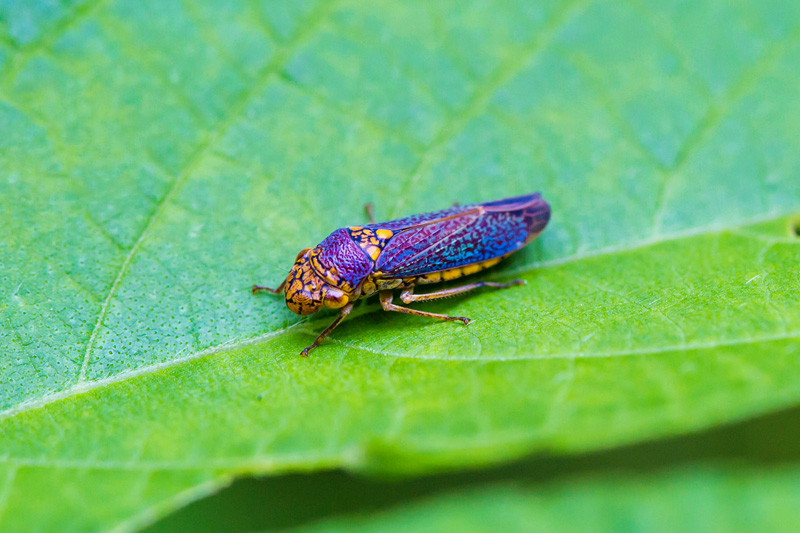
The speckled sharpshooter is part of the same tribe as the broad-headed sharpshooter and exhibits similar behavior. I think its body looks somewhat like a star field.
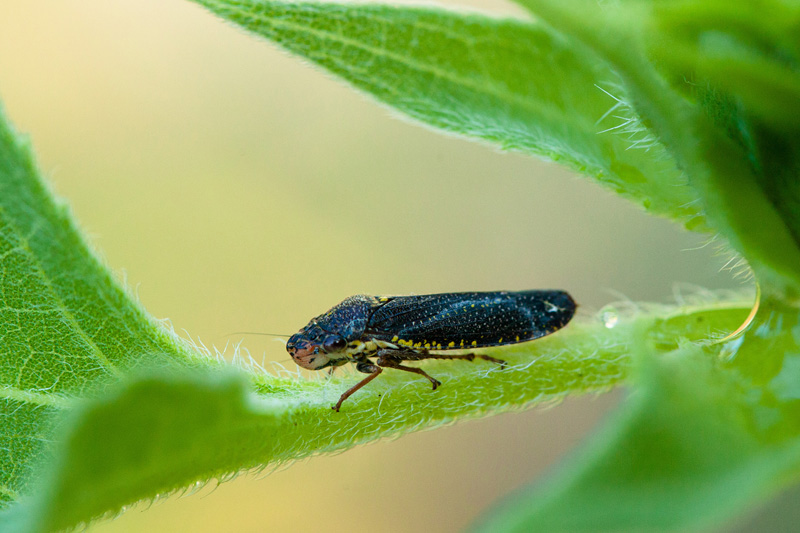
Here’s a sharpshooter, Tylozygus bifidus, about which I can find almost no information, but I think it’s beautiful so I’m including it!
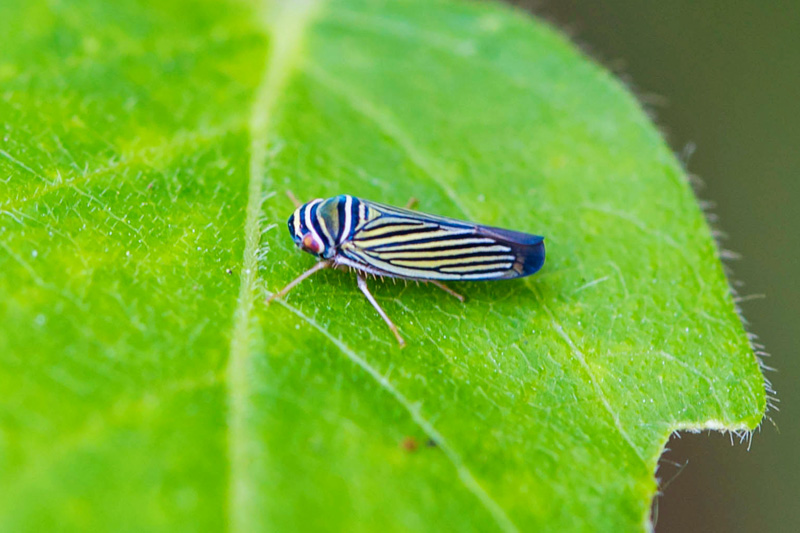
The yellow-striped leafhopper is a highly-contrasting black and yellow in the eastern part of the U.S., with the black becoming reddish further west.
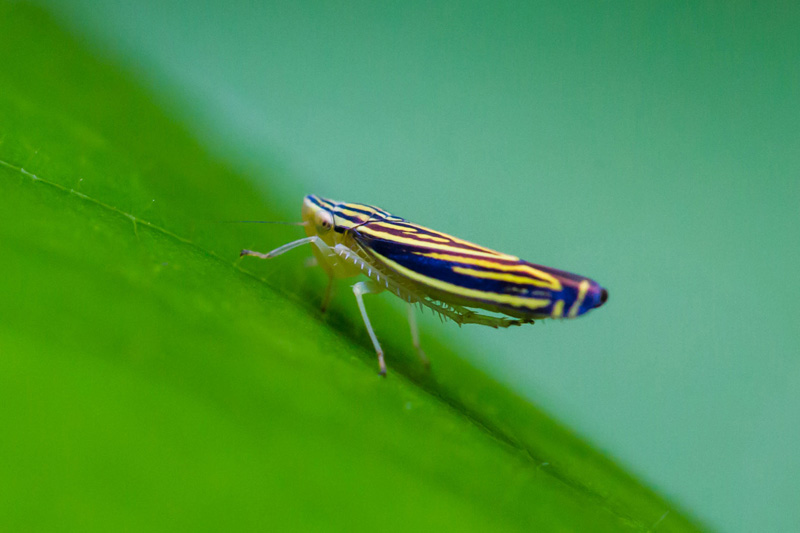
Because one of its host plants is the invasive Chinese privet, it’s fitting that the privet leafhopper is known for being a pest in the United States. Native to Europe, this hopper is a source of serious disease in plants in the Rose family (including fruit trees like apples and cherries).
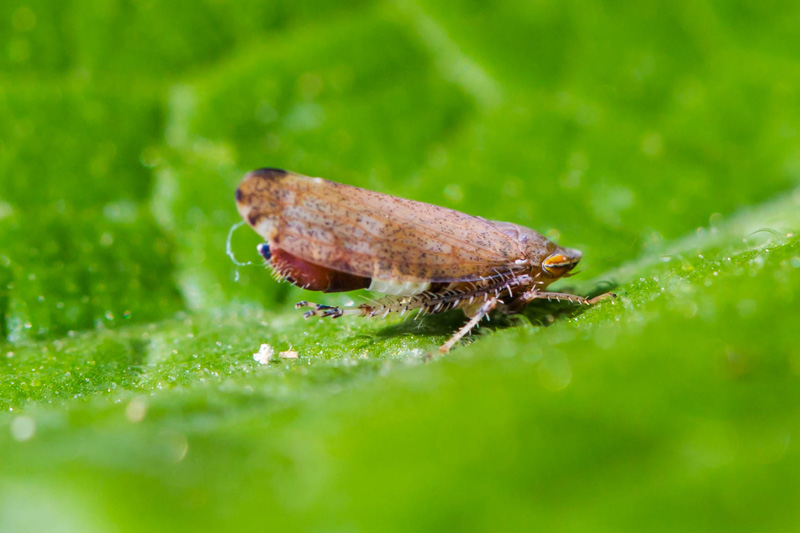
Finally, here’s a hopper I see throughout the summer on the edges of the park’s golf course. A highly variable species, the coppery leafhopper ranges from purplish and grayish to, well, coppery. Females always have pale bands on their wings, while males do not, which is why I feel safe in saying these are both females.
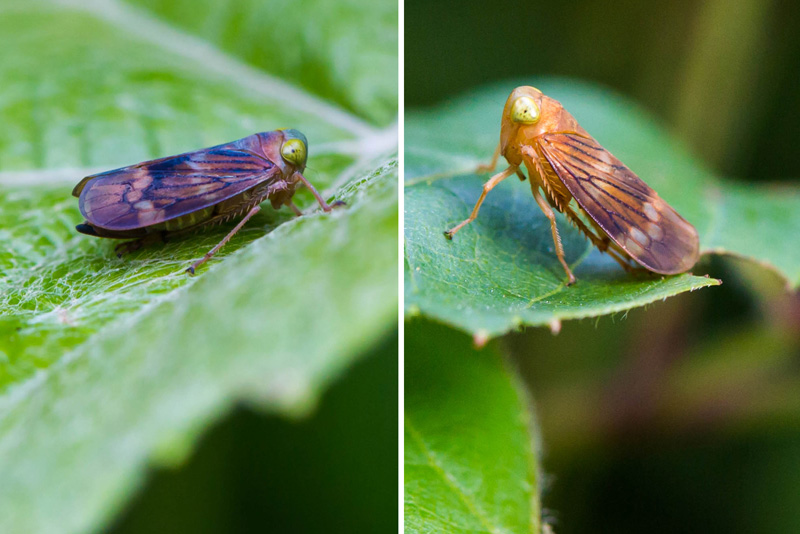 Want to see a sharpshooter in action? Here’s a short video from Science Magazine that I’m confident is more than you ever wanted to know about a bug’s rear end.
Want to see a sharpshooter in action? Here’s a short video from Science Magazine that I’m confident is more than you ever wanted to know about a bug’s rear end.



